STAX History: Electrostats Against Market Conjugation
I rarely want to write a praise ode to any brand, as a rule, I am interested in the personalities who created the company or introduce advanced technologies. It is for people that I do not skimp on epithets. However, in this material there will be an exception to the rules. In the next article of our historical cycle, we will speak about a company whose name has become synonymous with the word combination electrostatic headphones - this is the company STAX. There is very little information about the founder of the company, and nothing about engineers.

Meanwhile, Stax products very seriously hooked me. Technical solutions that are implemented in the devices of this brand, remain popular not due to the laws of the market, but rather contrary to them. It seems that this company does not know or does not want to know that in matters of any mass audio compromises and marketers won back in the mid-eighties of the last century. Almost everywhere, but not in STAX. So, under the cut the story of the true samurai of electrostatic sound reproduction - the company STAX.
1938 is the year when STAX was founded. The company was organized by Naotake Hayashi, who managed to create a world-renowned company from a small family business. At this time, Japan waged a fierce war with China, which began in 1937, smoothly spilled over into World War II and ended in 1945.
')
About the devices that the company released during this period, virtually nothing is known. I assume that not a single enterprise in Japan at that time was able to evade working for the defense industry. Japanese industry in those years followed the principle of "Everything for the front, everything for the victory of Emperor Hirohito." Given the profile of the post-war STAX developments, I assume that the company was engaged in the creation of headsets for Japanese military aircraft, for example, the one that is presented below.
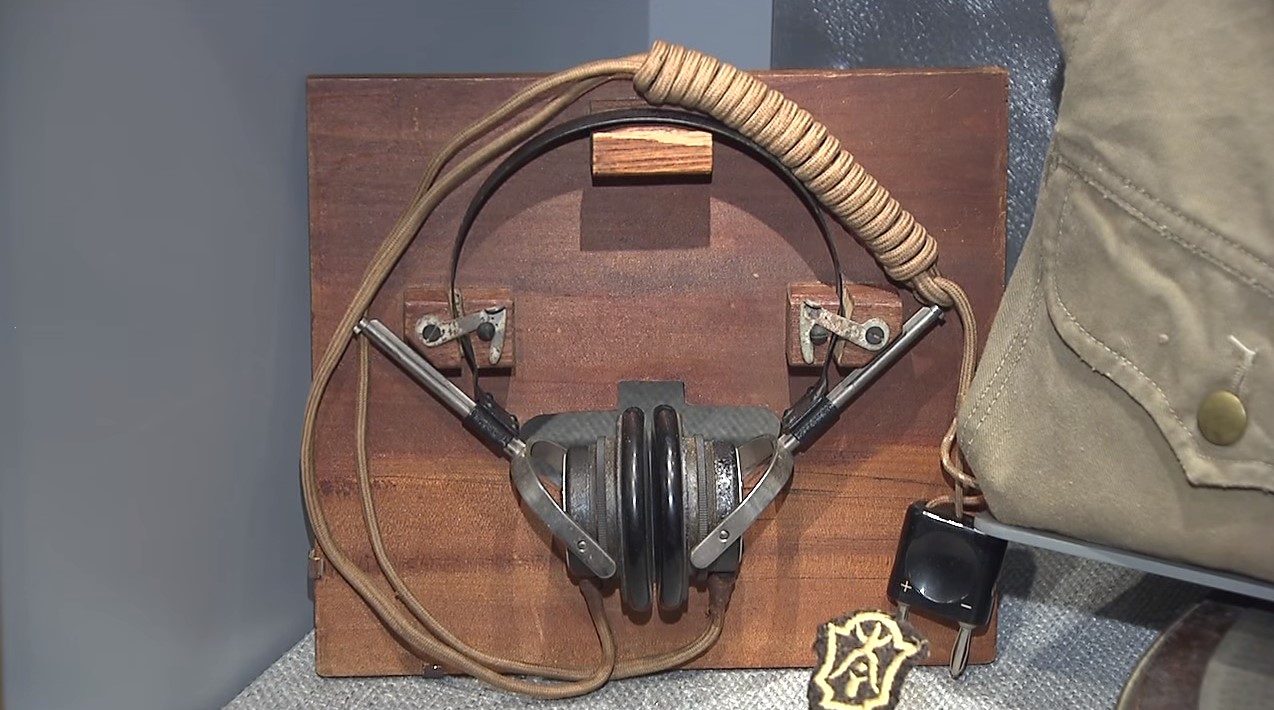
The name of the company is associated with electronics for non-military professionals in the post-war period. Officially, the first STAX devices are: a condenser microphone, a unique electrostatic pickup head, the CP-20, and a no less unique curved LA-24 toner arm. All these devices appear almost simultaneously in 1950, 12 years after its foundation.
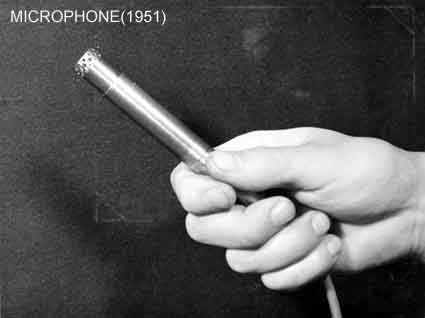
Products run in several versions at once, there are modifications for the premium segment, as well as devices a bit simpler. So, for example, CP-20AD / N cartridges are produced with a diamond needle, and CP-20AN with sapphire.

In other words, STAX, as a card from the sleeve, got several lines of popular and unique on the principle of premium devices that could compete with the best samples of world-famous manufacturers at that time. It seems that the company has been engaged in fundamental research in the field of electroacoustics, materials science, electricity physics for 12 years, and has been developing for decades to suddenly become, if not the market leaders, then just occupy a premium audio niche.
Already at that moment, the company chose the direction of development - electrostatic devices in electroacoustics. All released CP-20 pickups were electrostatic.

They had an extremely wide range of reproducible frequencies for that time from 20 to 18,000 Hz, which is quite a lot for that time. The logical continuation of the CP line is the electrostatic cartridge CP-X, one of the most well-known STAX products that is not directly related to headphones.

The name STAX also explicitly hinted at the company's profile. By the way, it is not known exactly when exactly the company received this name. It is clear that the name ス タ ッ ク ス (Yugen-gaisha Sutakkusu) was originally intended as something related to electrostatics.
STAX pushed the next development even closer to the future narrow profile in 1954. The company has released electrostatic tweeters. It should be noted that the electrostatic principle of sound radiation tried to use for acoustic systems from the 20s of the last century.
Especially often electrostatic drivers were used in acoustics for movie theaters, but emitters of this type at that time were unreliable due to the lack of suitable polymeric materials, and by the mid-30s the electrostatic technology was almost completely replaced by dynamic loudspeakers. It can be said that STAX in its development in 1954 resurrected this technology and predetermined its development.

In 1960, an epoch-making event for STAX occurs, the company releases the world's first electrostatic headphones, the SR-1. To this day, the electrostatic principle is considered a reference to ensure maximum fidelity playback at headphones. Naotake Hayashi refuses the commonly used “headphones” and calls the device a fundamentally new term “Earspeakers”, which can be literally translated as “ear columns”.

These headphones require their own amplifier, and the company in 1960 managed to release two models of the SRD-1 and SRD-2 at once. Both with bias current regulation. Amplifiers - tube with a relatively powerful output transformers. Their output signal is characterized by a high potential difference, which is necessary for the realization of electrostatic sound emission. Interestingly, engineers start with a relatively low voltage for electrostatics of 150 V. With successive modifications, the voltage is increased to 230 V in order to increase the amplitude of the radiating surface.

For the membrane of the headphones used a polymer film with a thickness of about 6 microns. At that time, it was the thinnest membrane in the world. Thanks largely to this feature, the world's first electrostatic headphones have the following characteristics:
The logical continuation of the first mass-produced electrostatics was an improved version of the SR-3.
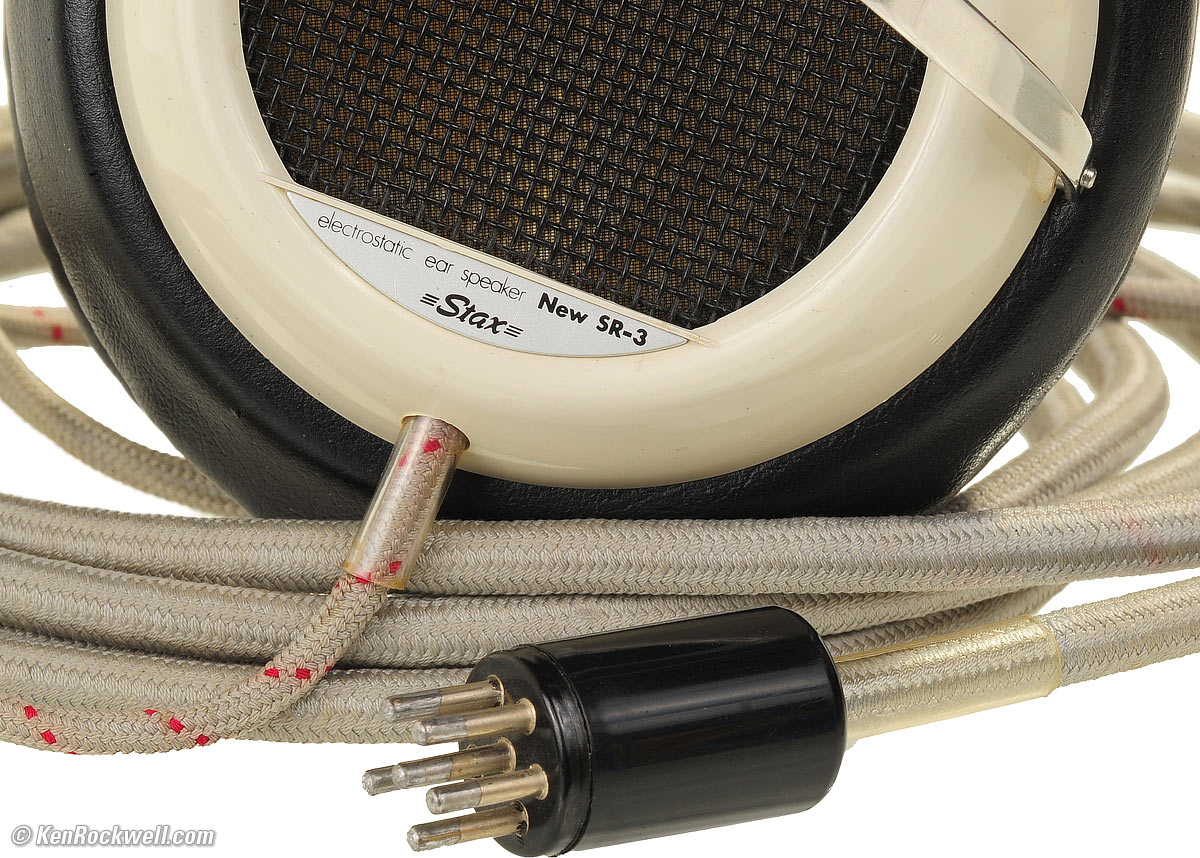
The company makes the development and production of electrostatic headphones its main activity. In parallel, STAX engineers strive to create emitters for a full-sized floor-standing speaker. So in 1964, a series of broadband electrostatic speakers ESS, the line includes systems ESS-3A, ESS-6A, ESS-12.

The devices have impressive characteristics for their time, namely:
Despite the credible figures, speakers do not become bestsellers and are considered exotic even at home in Japan. The vast majority of speakers from STAX suffer the same fate. Until now, a rare music lover is willing to pay for electrostatic speakers, a similar situation was in the 60s. The ESS series continued in the 60s with another ESS-4A device, after which it sank into oblivion, as an unpromising, from a commercial point of view, direction.

From the late 60s, a period of intensive development and growth begins for STAX. Their headphones are becoming popular outside of Japan, which leads to a sharp increase in production and intensification of research in the field of electrostatic technology. So from 1968 to 1970 about 40 serial products appear, among which practically the whole range of products needed by an average audiophile of the 70s. In particular, headphones, separate electrostatic RF sections, pickup heads, tonearms (in particular, with carbon parts, for example, UA-9), amplifiers (including class A, as well as one of the first integrated systems built on principle of double mono).
 UA-9
UA-9
The year 1979 was especially rich in novelties. It was then that the company released the CA-X PRO dual monoblock amplifier, the legendary CP-Y / TYPE 2 pickup, a special adapter for connecting electrostatic headphones to a standard stereo system - the SRD-X.
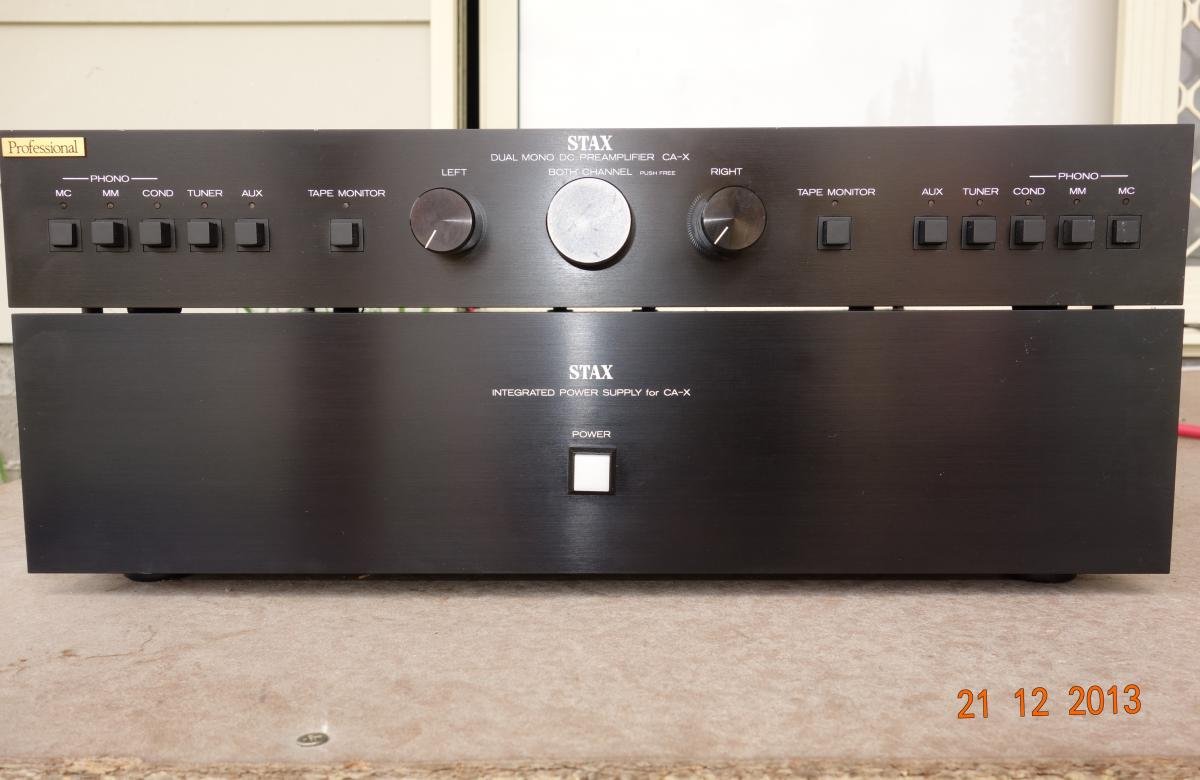
Also in 1979, the legendary SR-Lambda panoramic sound headphones appeared. The headphone diaphragm was made of 3 micron thick film, and the carefully designed acoustic design allowed achieving a panoramic sound and eliminating the “sound inside the head” effect.

Sr-lambda
Headphones, which became the beginning of one of the most popular series that still exist today, reproduced sound in the frequency range from 8 Hz to 35 kHz, had a sensitivity of 102 dB / 100 V rms and were able to develop sound pressure up to 109 dB.
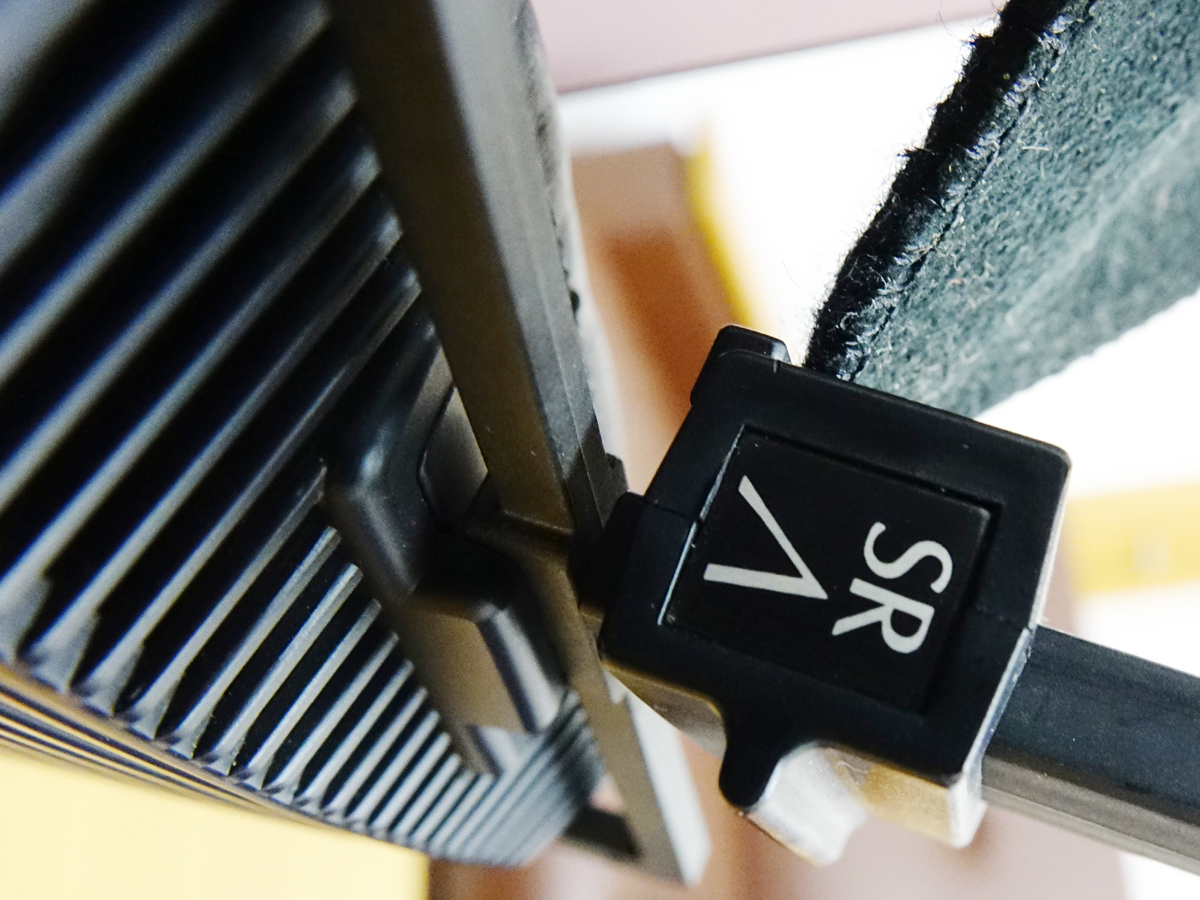
Improved version of the 1986 SR-Lambda PRO
The 80s became even more saturated for the STAX. The company has managed to develop and prepare for the serial launch of more than 75 products. Among others, a studio version of the SR-Lambda headphones, called the Stax SR-Lambda Pro, was released. In addition to the already traditional electrostatic headphones, Stax became one of the pioneers of digital audio, releasing the CDP Quattro CD player.

Continued development of devices for playing vinyl discs, in a separate direction were allocated amplifiers. In the 1980s, a total of 76 devices were designed and launched, including 12 models of electrostatic headphones.
From the mid-1990s, the company began to experience financial difficulties. The fact is that it was in the 90s that the main audiophile trends, namely the ideas about fidelity of reproduction, cracked and changed under the information pressure of marketing specialists and “omnipotent” audio media. Accessibility and utility have come into vogue, and STAX products, against the background of what giants like Philips and Panasonic threw into the market every year, seemed to be redundant and unreasonably expensive.

The reorganization did not really help the company and the financial difficulties of the STAX intensified, reaching their peak in the middle of zero. Titanic efforts during this period, the company launched a series of 64 products, mostly they were headphones, amplifiers for them, adapters and other accessories. A typical example of the innovations of the 90s are the world's first in-channel electrostatic headphones with a portable amplifier, STAX SR-001. New items did not save, the series decreased, revenues continued to fall.

The few reports suggest that the founder and permanent leader of kolmpani, Naotake Hayashi, resigned in the late 1990s. From the fragmentary data available on the network, it is known that in 1991 he was 84 years old, and he still managed the enterprise. It is obvious that his departure did not contribute to the improvement of affairs in the company.
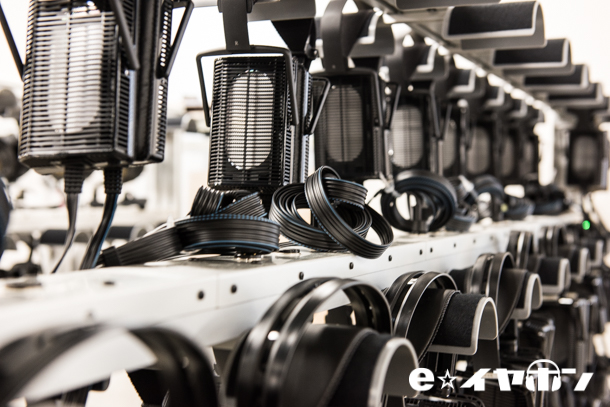
In December 2011, STAX was absorbed by Edifier, a Chinese speaker manufacturer. The Chinese company said it had acquired 100% of Stax for a symbolic price of ¥ 120,000,000, which is slightly more than one million dollars. The new owners decided to continue producing electrostatic headphones, amplifiers and DACs for them. Further investment in the company saved it from ruin and made it possible to continue the development and serial production.
Last year, the company turned 80 years old. By the anniversary STAX released a limited edition series of the legendary SR-009BK headphones, which came out with a circulation of just 180 copies.

Other products of the company today are produced in series of several thousand pieces. Despite the difficulties experienced in financial situation and the transition under the control of a larger Edifier, STAX, as they say in Japan, did not lose face. They did not go in the wake of the market and found opportunities to swim against the tide.
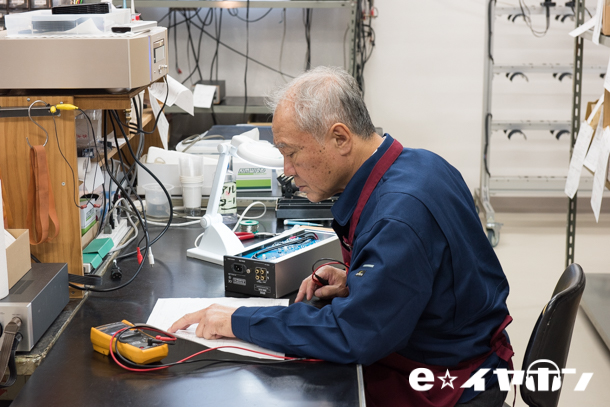
Today they are true to the direction chosen many years ago, and interest in their products, as well as the electroacoustic principle itself, is returning. Interestingly, the company has a workshop that repairs and even takes on models that were produced 20 years ago - that says a lot, both about the quality of their products and their approach to business.
Jeans
In our catalog there are headphones , many, different, among other STAX .
Photo content used:
staxaudio.com
www.stereo.net.au
www.kenrockwell.com
www.usna.edu
www.vinylengine.com
www.usaudiomart.com
www.head-fi.org
e-earphone.blog
kenrockwell.com/audio/stax/new-sr-3.htm

Meanwhile, Stax products very seriously hooked me. Technical solutions that are implemented in the devices of this brand, remain popular not due to the laws of the market, but rather contrary to them. It seems that this company does not know or does not want to know that in matters of any mass audio compromises and marketers won back in the mid-eighties of the last century. Almost everywhere, but not in STAX. So, under the cut the story of the true samurai of electrostatic sound reproduction - the company STAX.
Unknown years and sudden start
1938 is the year when STAX was founded. The company was organized by Naotake Hayashi, who managed to create a world-renowned company from a small family business. At this time, Japan waged a fierce war with China, which began in 1937, smoothly spilled over into World War II and ended in 1945.
')
About the devices that the company released during this period, virtually nothing is known. I assume that not a single enterprise in Japan at that time was able to evade working for the defense industry. Japanese industry in those years followed the principle of "Everything for the front, everything for the victory of Emperor Hirohito." Given the profile of the post-war STAX developments, I assume that the company was engaged in the creation of headsets for Japanese military aircraft, for example, the one that is presented below.

The name of the company is associated with electronics for non-military professionals in the post-war period. Officially, the first STAX devices are: a condenser microphone, a unique electrostatic pickup head, the CP-20, and a no less unique curved LA-24 toner arm. All these devices appear almost simultaneously in 1950, 12 years after its foundation.

Products run in several versions at once, there are modifications for the premium segment, as well as devices a bit simpler. So, for example, CP-20AD / N cartridges are produced with a diamond needle, and CP-20AN with sapphire.

In other words, STAX, as a card from the sleeve, got several lines of popular and unique on the principle of premium devices that could compete with the best samples of world-famous manufacturers at that time. It seems that the company has been engaged in fundamental research in the field of electroacoustics, materials science, electricity physics for 12 years, and has been developing for decades to suddenly become, if not the market leaders, then just occupy a premium audio niche.
Already at that moment, the company chose the direction of development - electrostatic devices in electroacoustics. All released CP-20 pickups were electrostatic.

They had an extremely wide range of reproducible frequencies for that time from 20 to 18,000 Hz, which is quite a lot for that time. The logical continuation of the CP line is the electrostatic cartridge CP-X, one of the most well-known STAX products that is not directly related to headphones.

The name STAX also explicitly hinted at the company's profile. By the way, it is not known exactly when exactly the company received this name. It is clear that the name ス タ ッ ク ス (Yugen-gaisha Sutakkusu) was originally intended as something related to electrostatics.
Well forgotten new
STAX pushed the next development even closer to the future narrow profile in 1954. The company has released electrostatic tweeters. It should be noted that the electrostatic principle of sound radiation tried to use for acoustic systems from the 20s of the last century.
Especially often electrostatic drivers were used in acoustics for movie theaters, but emitters of this type at that time were unreliable due to the lack of suitable polymeric materials, and by the mid-30s the electrostatic technology was almost completely replaced by dynamic loudspeakers. It can be said that STAX in its development in 1954 resurrected this technology and predetermined its development.

In 1960, an epoch-making event for STAX occurs, the company releases the world's first electrostatic headphones, the SR-1. To this day, the electrostatic principle is considered a reference to ensure maximum fidelity playback at headphones. Naotake Hayashi refuses the commonly used “headphones” and calls the device a fundamentally new term “Earspeakers”, which can be literally translated as “ear columns”.

These headphones require their own amplifier, and the company in 1960 managed to release two models of the SRD-1 and SRD-2 at once. Both with bias current regulation. Amplifiers - tube with a relatively powerful output transformers. Their output signal is characterized by a high potential difference, which is necessary for the realization of electrostatic sound emission. Interestingly, engineers start with a relatively low voltage for electrostatics of 150 V. With successive modifications, the voltage is increased to 230 V in order to increase the amplitude of the radiating surface.

For the membrane of the headphones used a polymer film with a thickness of about 6 microns. At that time, it was the thinnest membrane in the world. Thanks largely to this feature, the world's first electrostatic headphones have the following characteristics:
- Mass: 320 g
- Diaphragm thickness: about 5 microns.
- Sensitivity: 95 dB / 100 V rms
- Resistance: 130 kΩ / 10 kHz
- Frequency Band: 20–20,000 Hz.
- base voltage: 150V / DC.
- Retail price: 6,000 ¥ / USD $ 50, which would be $ 432 today.
The logical continuation of the first mass-produced electrostatics was an improved version of the SR-3.

The company makes the development and production of electrostatic headphones its main activity. In parallel, STAX engineers strive to create emitters for a full-sized floor-standing speaker. So in 1964, a series of broadband electrostatic speakers ESS, the line includes systems ESS-3A, ESS-6A, ESS-12.

The devices have impressive characteristics for their time, namely:
- Frequency range: 40 Hz to 20 kHz.
- Sound pressure output level: 84 dB / W / m.
- Minimum recommended power: from 15 watts.
- Resistance: 8 ohms (400 ohms - terminal for OTL).
- Power supply: 100 V, 50 Hz / 60 Hz.
Despite the credible figures, speakers do not become bestsellers and are considered exotic even at home in Japan. The vast majority of speakers from STAX suffer the same fate. Until now, a rare music lover is willing to pay for electrostatic speakers, a similar situation was in the 60s. The ESS series continued in the 60s with another ESS-4A device, after which it sank into oblivion, as an unpromising, from a commercial point of view, direction.

Golden period
From the late 60s, a period of intensive development and growth begins for STAX. Their headphones are becoming popular outside of Japan, which leads to a sharp increase in production and intensification of research in the field of electrostatic technology. So from 1968 to 1970 about 40 serial products appear, among which practically the whole range of products needed by an average audiophile of the 70s. In particular, headphones, separate electrostatic RF sections, pickup heads, tonearms (in particular, with carbon parts, for example, UA-9), amplifiers (including class A, as well as one of the first integrated systems built on principle of double mono).

The year 1979 was especially rich in novelties. It was then that the company released the CA-X PRO dual monoblock amplifier, the legendary CP-Y / TYPE 2 pickup, a special adapter for connecting electrostatic headphones to a standard stereo system - the SRD-X.

Also in 1979, the legendary SR-Lambda panoramic sound headphones appeared. The headphone diaphragm was made of 3 micron thick film, and the carefully designed acoustic design allowed achieving a panoramic sound and eliminating the “sound inside the head” effect.

Sr-lambda
Headphones, which became the beginning of one of the most popular series that still exist today, reproduced sound in the frequency range from 8 Hz to 35 kHz, had a sensitivity of 102 dB / 100 V rms and were able to develop sound pressure up to 109 dB.

Improved version of the 1986 SR-Lambda PRO
The 80s became even more saturated for the STAX. The company has managed to develop and prepare for the serial launch of more than 75 products. Among others, a studio version of the SR-Lambda headphones, called the Stax SR-Lambda Pro, was released. In addition to the already traditional electrostatic headphones, Stax became one of the pioneers of digital audio, releasing the CDP Quattro CD player.

Continued development of devices for playing vinyl discs, in a separate direction were allocated amplifiers. In the 1980s, a total of 76 devices were designed and launched, including 12 models of electrostatic headphones.
Traditionalism on the verge of foul
From the mid-1990s, the company began to experience financial difficulties. The fact is that it was in the 90s that the main audiophile trends, namely the ideas about fidelity of reproduction, cracked and changed under the information pressure of marketing specialists and “omnipotent” audio media. Accessibility and utility have come into vogue, and STAX products, against the background of what giants like Philips and Panasonic threw into the market every year, seemed to be redundant and unreasonably expensive.

The element base of many STAX devices has not changed for decades, for example, in the POD-X (development of the 70s), a variety of expensive, audiophile “spreading” and the legendary lamps of the company Telefunken 12AU7 are clearly visibleIn connection with the above, by the beginning of zero the company came to financial exhaustion and was on the verge of bankruptcy. Despite the difficult economic situation, most divisions continued to develop new products. In 1996, the company underwent a reorganization and continued operations with a renewed structure. What exactly the changes were, corporate resources are silent, Naotake Hayashi continued to lead the company, as before. However, in all official sources, the period after 1996 is called New Stax. It is probably a matter of abolishing all divisions of the company that did not work on headphones.
The reorganization did not really help the company and the financial difficulties of the STAX intensified, reaching their peak in the middle of zero. Titanic efforts during this period, the company launched a series of 64 products, mostly they were headphones, amplifiers for them, adapters and other accessories. A typical example of the innovations of the 90s are the world's first in-channel electrostatic headphones with a portable amplifier, STAX SR-001. New items did not save, the series decreased, revenues continued to fall.

STAX SR-001 mk2 - improved version
Saving absorption
The few reports suggest that the founder and permanent leader of kolmpani, Naotake Hayashi, resigned in the late 1990s. From the fragmentary data available on the network, it is known that in 1991 he was 84 years old, and he still managed the enterprise. It is obvious that his departure did not contribute to the improvement of affairs in the company.

In December 2011, STAX was absorbed by Edifier, a Chinese speaker manufacturer. The Chinese company said it had acquired 100% of Stax for a symbolic price of ¥ 120,000,000, which is slightly more than one million dollars. The new owners decided to continue producing electrostatic headphones, amplifiers and DACs for them. Further investment in the company saved it from ruin and made it possible to continue the development and serial production.
Total
Last year, the company turned 80 years old. By the anniversary STAX released a limited edition series of the legendary SR-009BK headphones, which came out with a circulation of just 180 copies.

Other products of the company today are produced in series of several thousand pieces. Despite the difficulties experienced in financial situation and the transition under the control of a larger Edifier, STAX, as they say in Japan, did not lose face. They did not go in the wake of the market and found opportunities to swim against the tide.

Today they are true to the direction chosen many years ago, and interest in their products, as well as the electroacoustic principle itself, is returning. Interestingly, the company has a workshop that repairs and even takes on models that were produced 20 years ago - that says a lot, both about the quality of their products and their approach to business.
Jeans
In our catalog there are headphones , many, different, among other STAX .
Photo content used:
staxaudio.com
www.stereo.net.au
www.kenrockwell.com
www.usna.edu
www.vinylengine.com
www.usaudiomart.com
www.head-fi.org
e-earphone.blog
kenrockwell.com/audio/stax/new-sr-3.htm
Source: https://habr.com/ru/post/445658/
All Articles